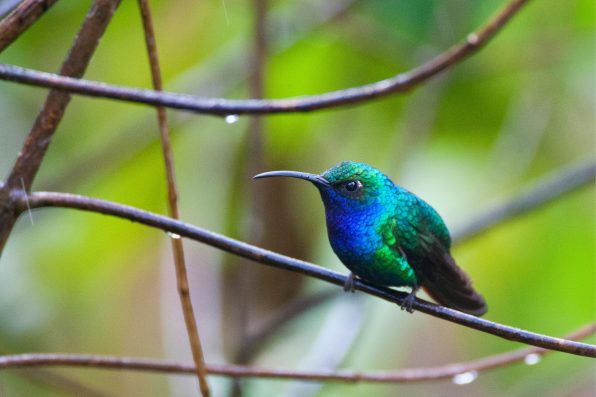
After spending 64 years as a lost species, the Santa Marta sabrewing was unexpectedly rediscovered in 2022. Since then, researchers have been studying the bird to find out more about its biology, behavior, and habitat range.
Yurgen Vega, one of the authors of the study, spotted the beautiful blue and green hummingbird in the Sierra Nevada de Santa Marta mountains of northern Colombia.
The mountain range is the tallest coastal mountain in the world. It is home to a rich cultural history and communities of wildlife that aren’t found anywhere else on the planet.
Seven months after Vega’s discovery, other researchers came across more hummingbirds within the same region but in different locations.
Before its discovery in 2022, the rare hummingbird was photographed once in 2010, only to seemingly disappear from the world again. The species is listed by the Search for Lost Birds as one of the top 10 most wanted lost birds.
For the last two years, experts have been monitoring the birds closely. They learned that the species maintained year-round territories and did not migrate as was previously thought.
They also found out that the bird occupies an extremely limited domain, sticking to four out of five nearby locations along the Guatapurí river basin on the southeastern slope of the mountain range.
“Our findings show that this amazing hummingbird may be an example of micro endemism, as it seems to be restricted to a limited area within the world’s most important continental center of endemism,” Esteban Botero-Delgadillo, the lead author of the study, said.
In addition, the team gained more knowledge of the Santa Marta sabrewing’s social behavior and feeding habits. Male birds typically form leks, a gathering that involves competitive displays and mating rituals to attract females. During these displays, they will chase intruders out of their territories.

The presence of riverbanks near where the leks take place indicates that close proximity to water is an important contributing factor to the survival of the critically endangered hummingbirds.
Female nest sites may also be located in those areas. Therefore, it is vital that these habitats are protected. The study of the hummingbirds took a lot of teamwork.
“Unveiling the Santa Marta sabrewing’s story was not only possible through a joint effort between academia, local, and international organizations, but also by collaboration with the local Indigenous communities who coexist with the species,” Carlos Esteban Lara, professor of the Universidad Nacional de Colombia, said.
Further conservation efforts will aim to benefit the birds, other local species, and the people living in the region.
Sign up for Chip Chick’s newsletter and get stories like this delivered to your inbox.












